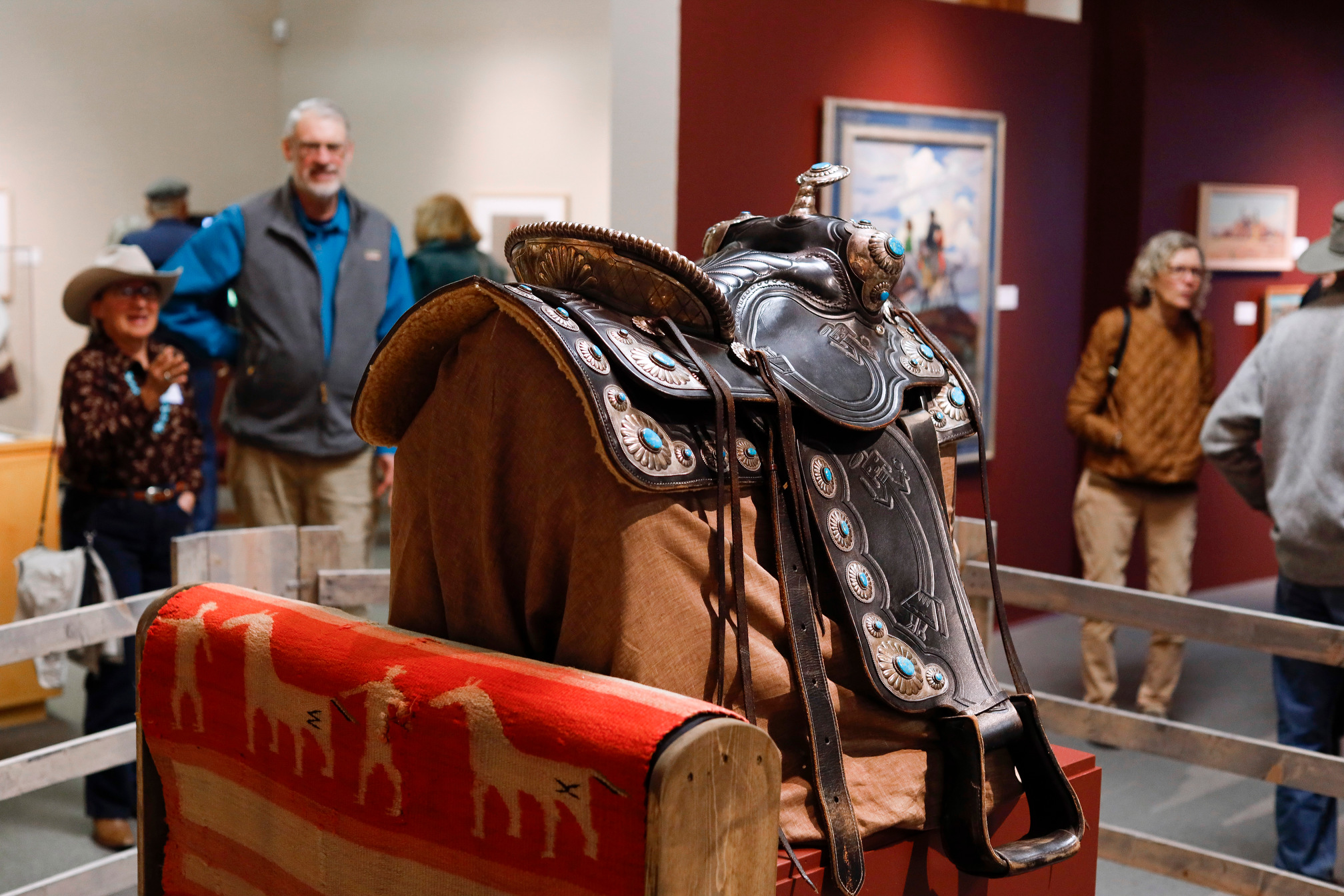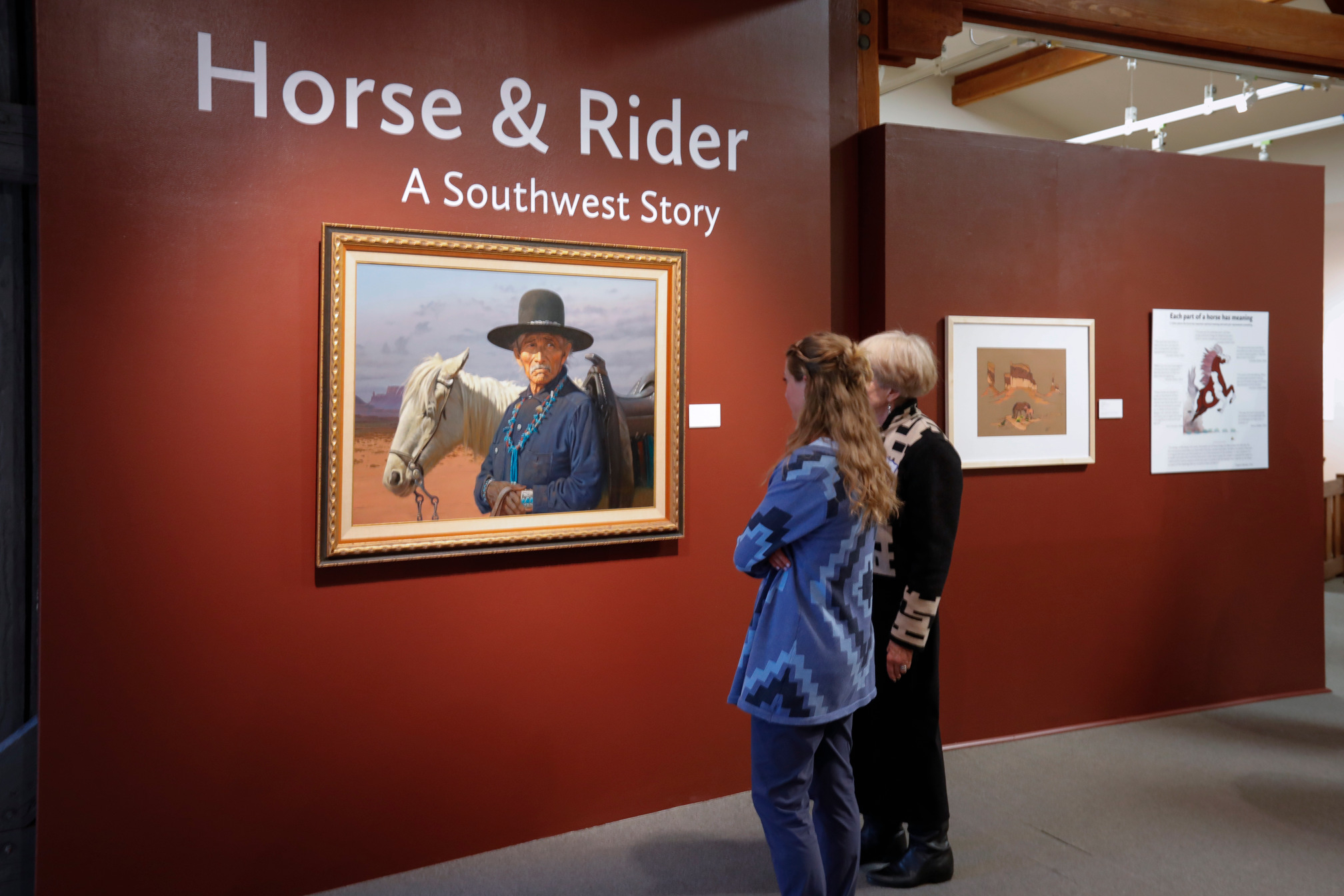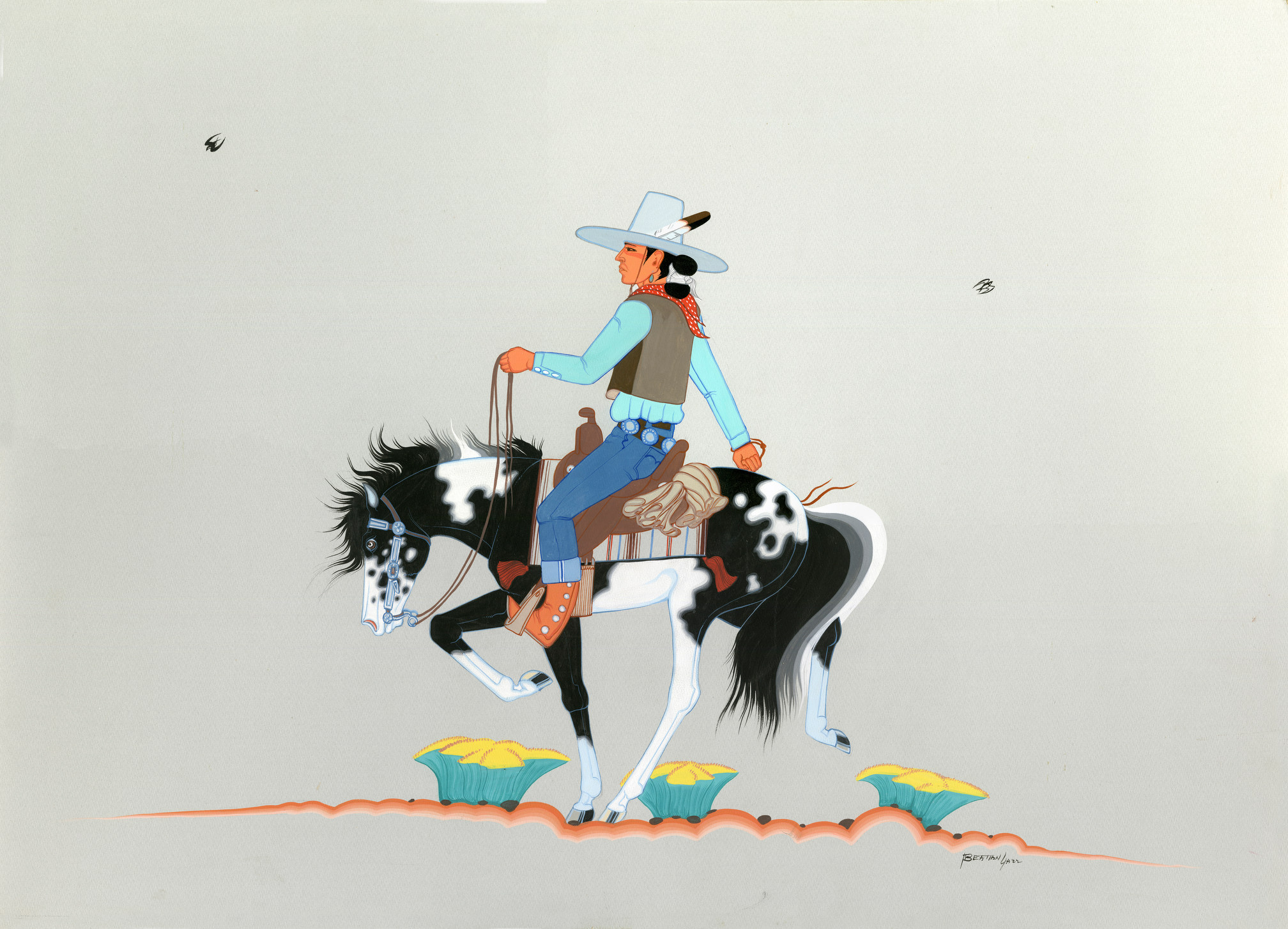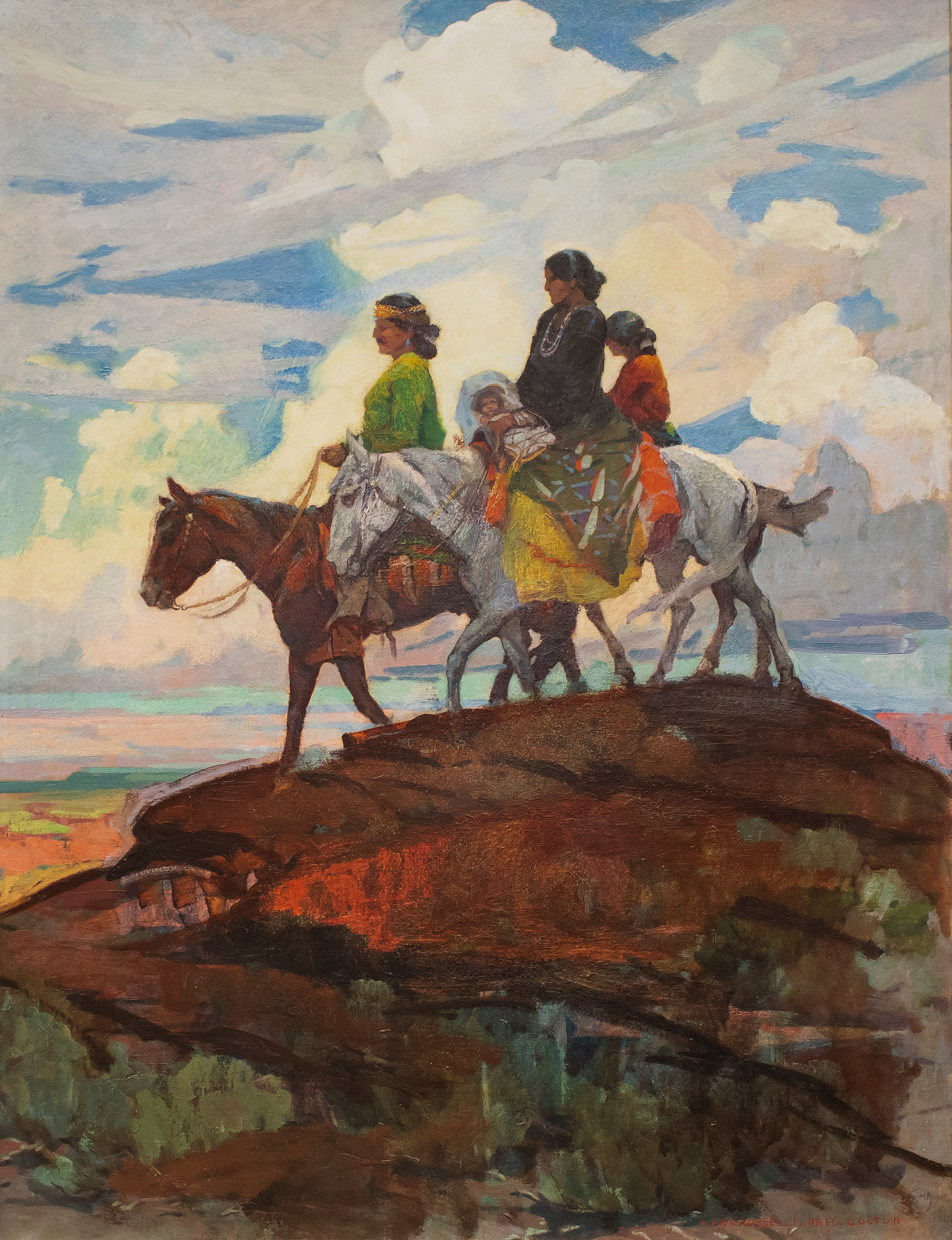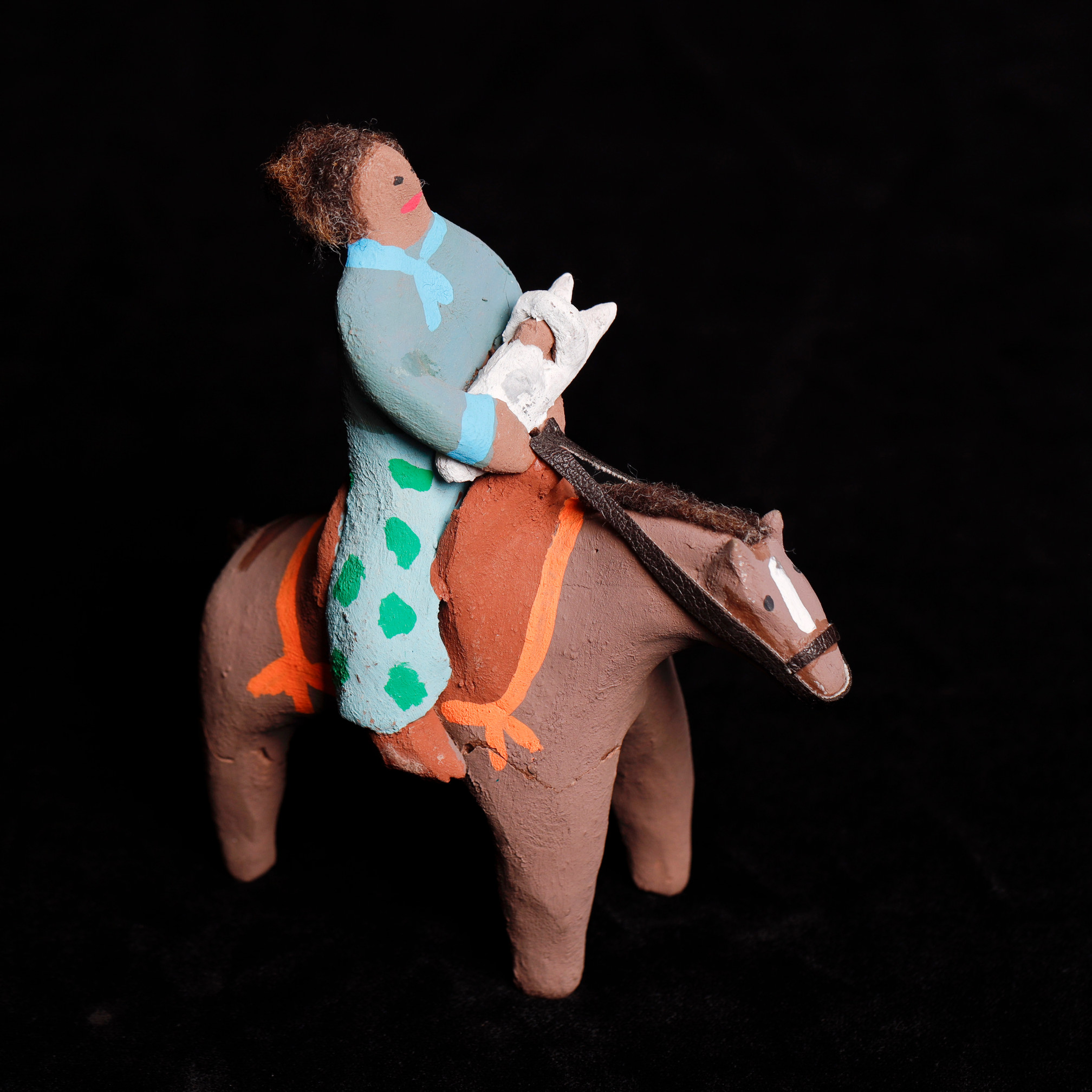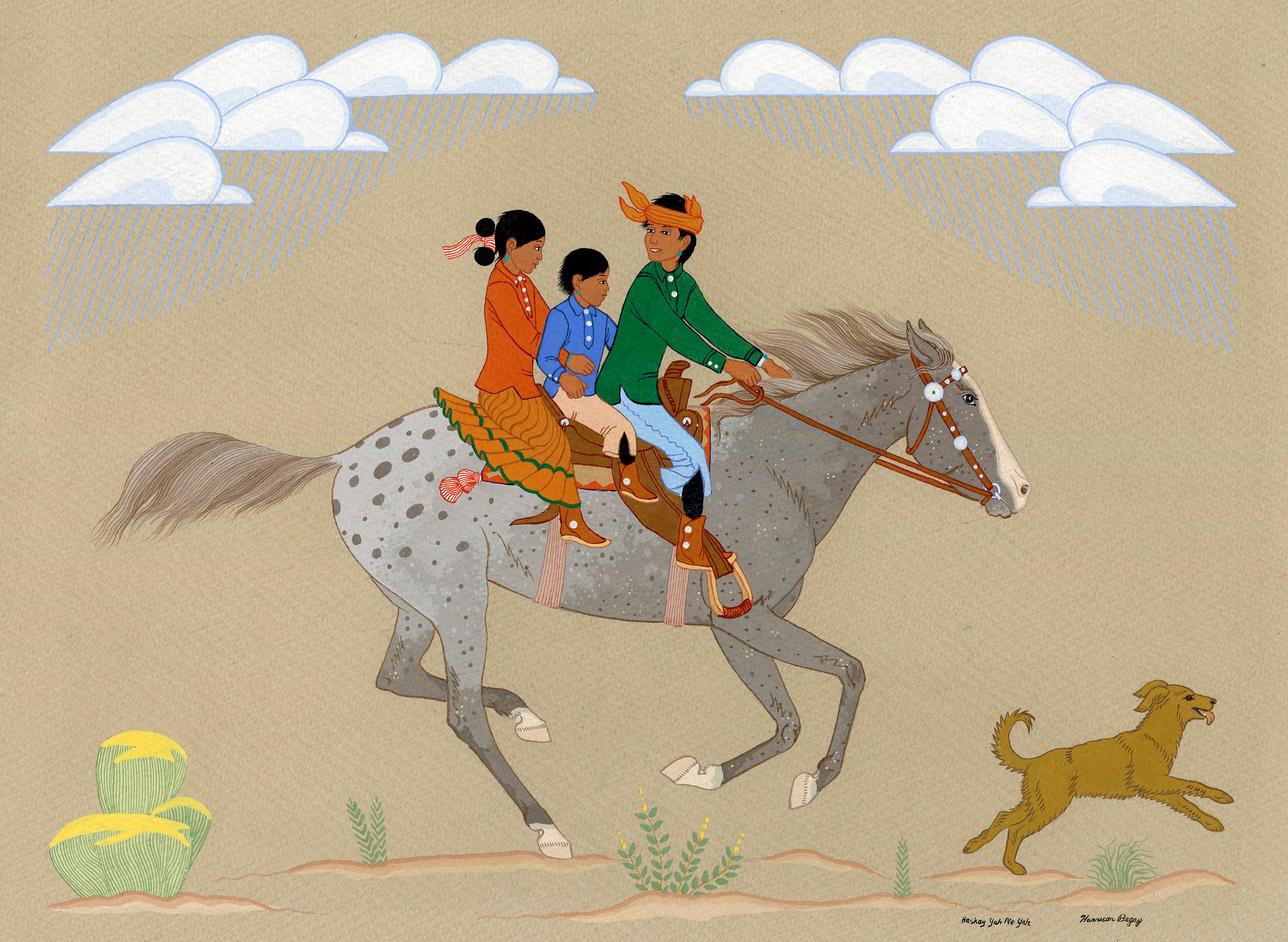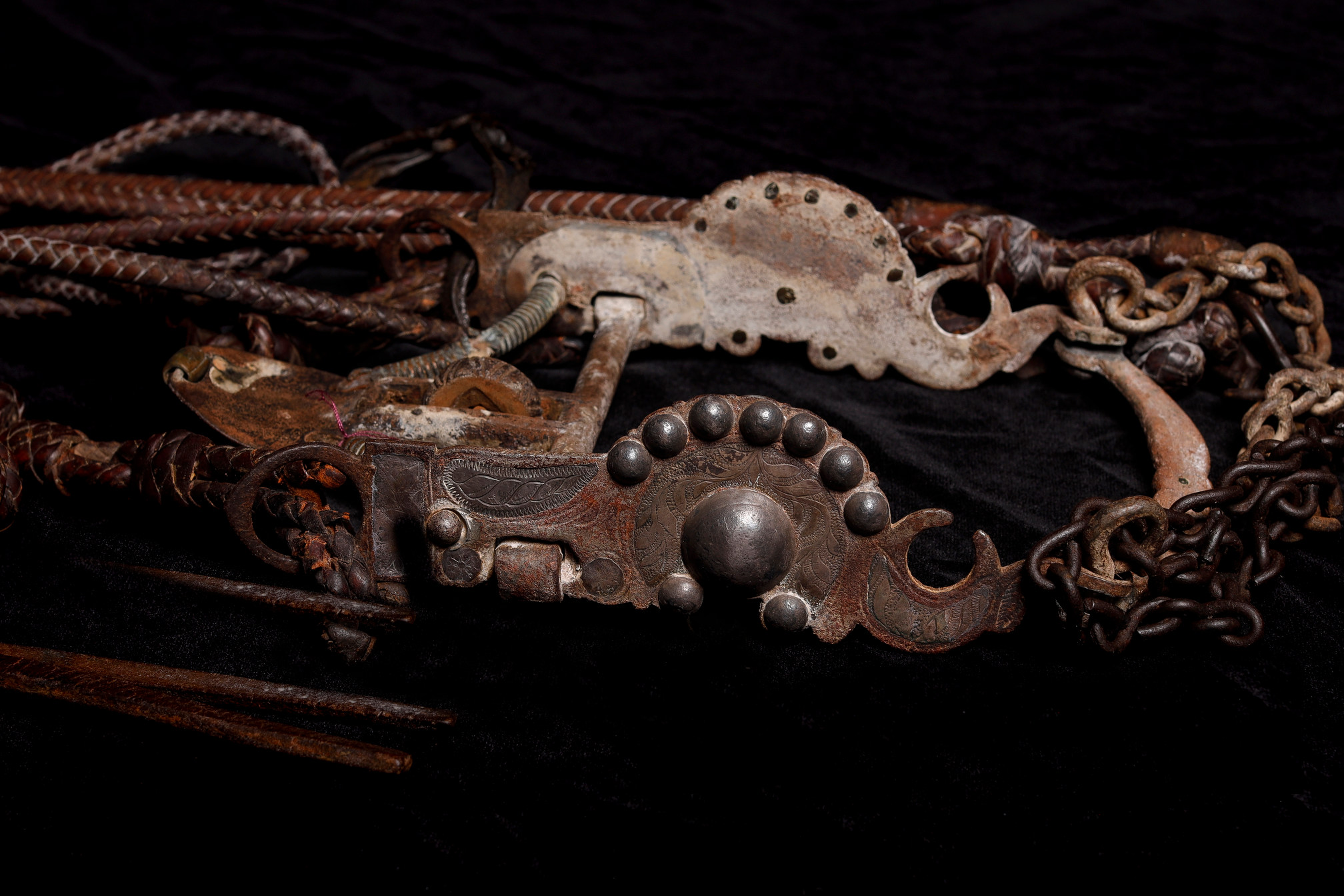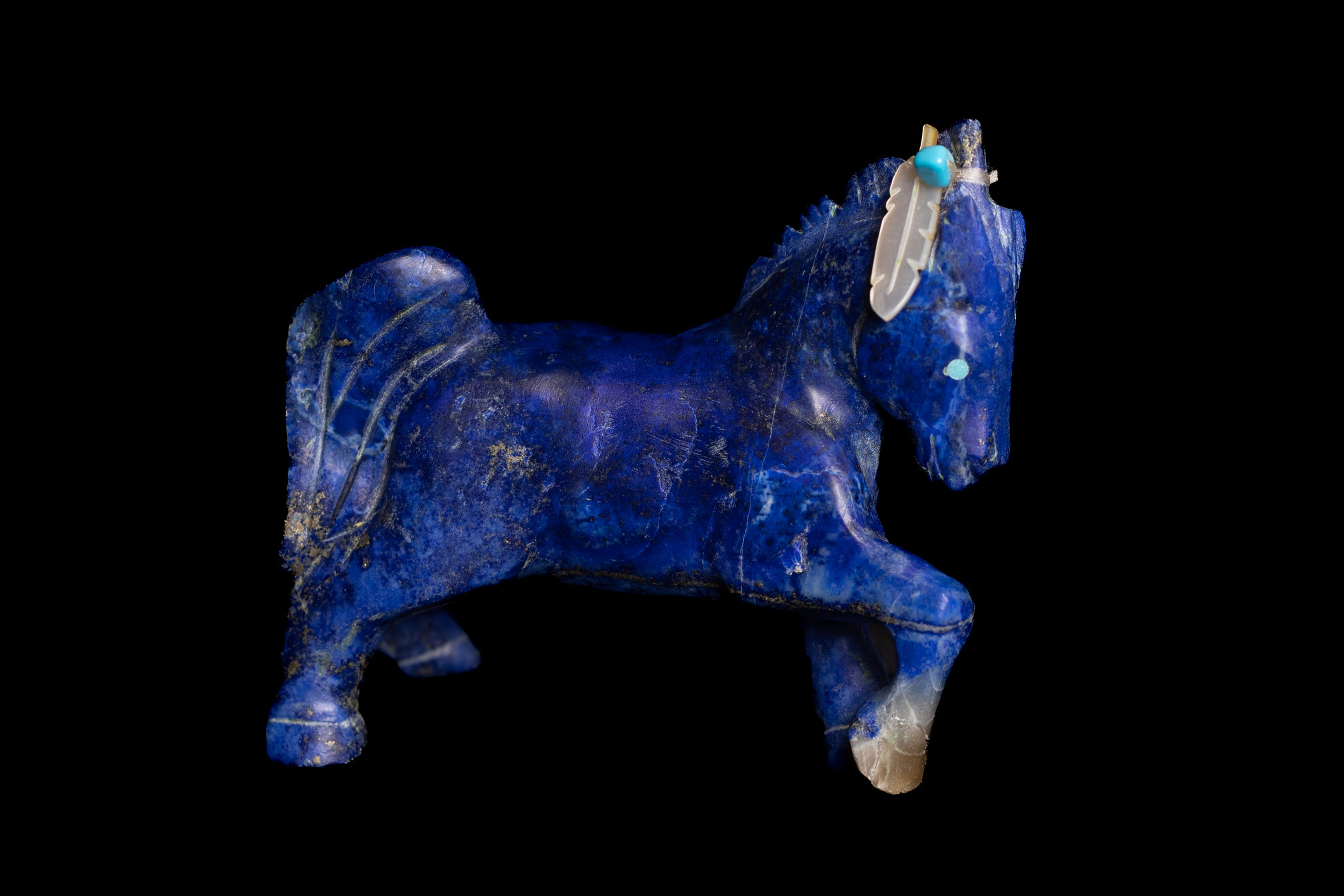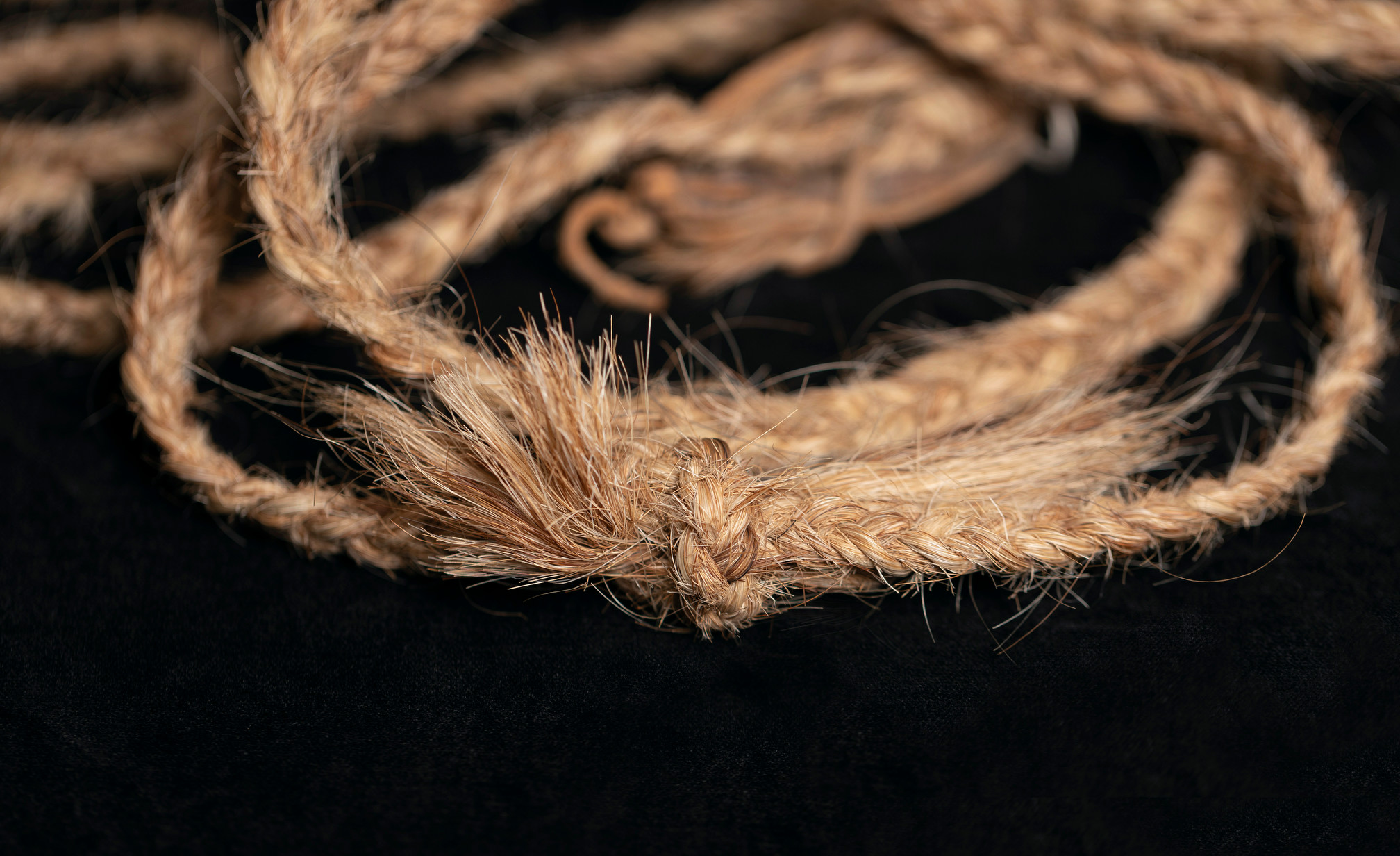
Horse & Rider: A Southwest Story
March 30, 2024 - October 28, 2024
Groundbreaking new research on the history of horses in North America was the impetus for this exhibition that combines fine art from the Museum’s collection with first-person accounts of the cultural and spiritual importance of horses in Indigenous culture.
The history of horses in North America is being rewritten as radiocarbon dating reveals that Indigenous people had ridden and cared for horses earlier than previously thought. For instance, a horse at Paa’ko in New Mexico dates from 1574-1625 CE, a time when various Pueblo people occupied the area but decades before the Spanish created a mission there. New research shows that by the early 1600s horses were present in the Great Plains and Northern Rockies — before Europeans reached the area.
The deep and strong bond between people and horses is seen through the many drawings, paintings, and carvings of horses in this show. The connection with horses is further revealed through the words of Diné, Hopi, and Zuni people who were generous in sharing their stories for the creation of this exhibit.
Read more about this exhibition in:

